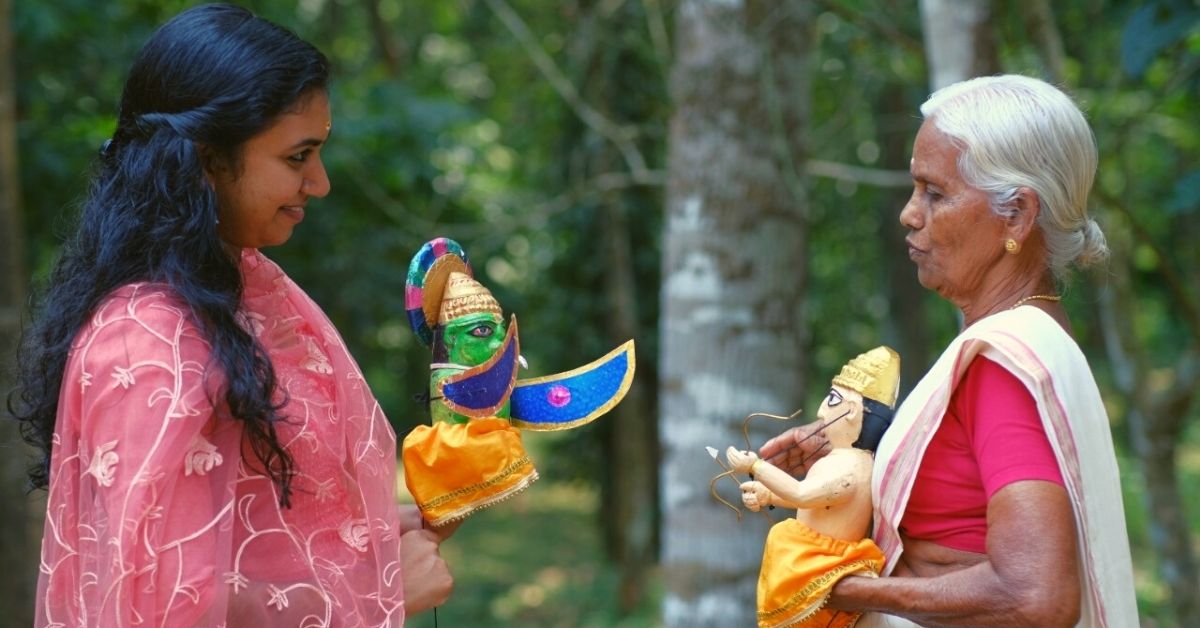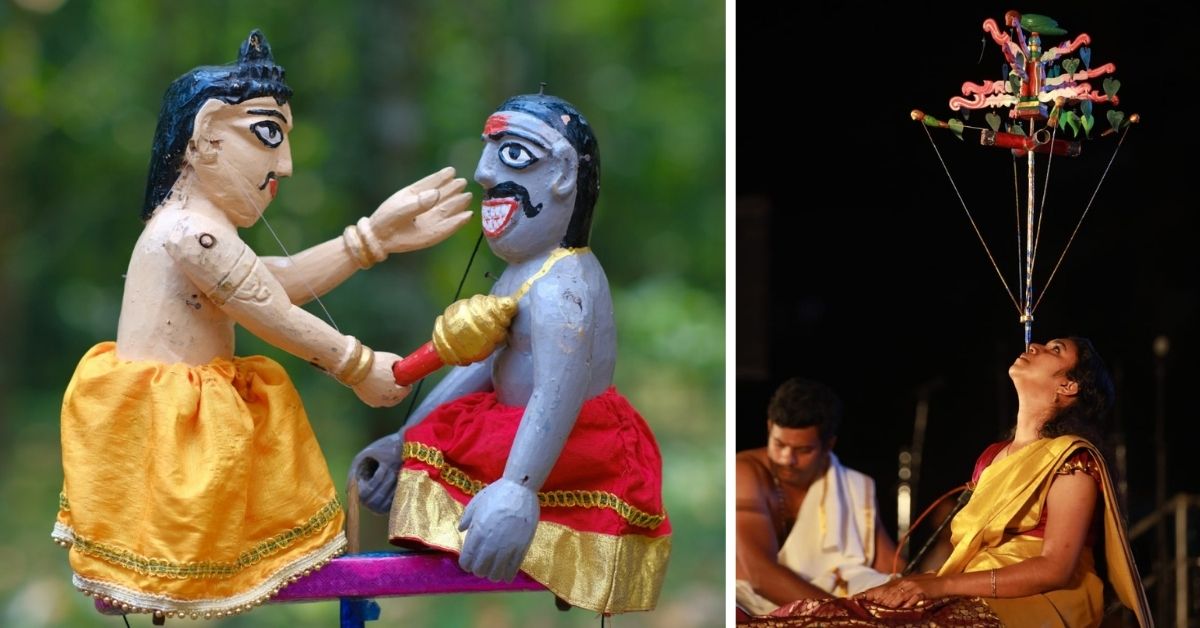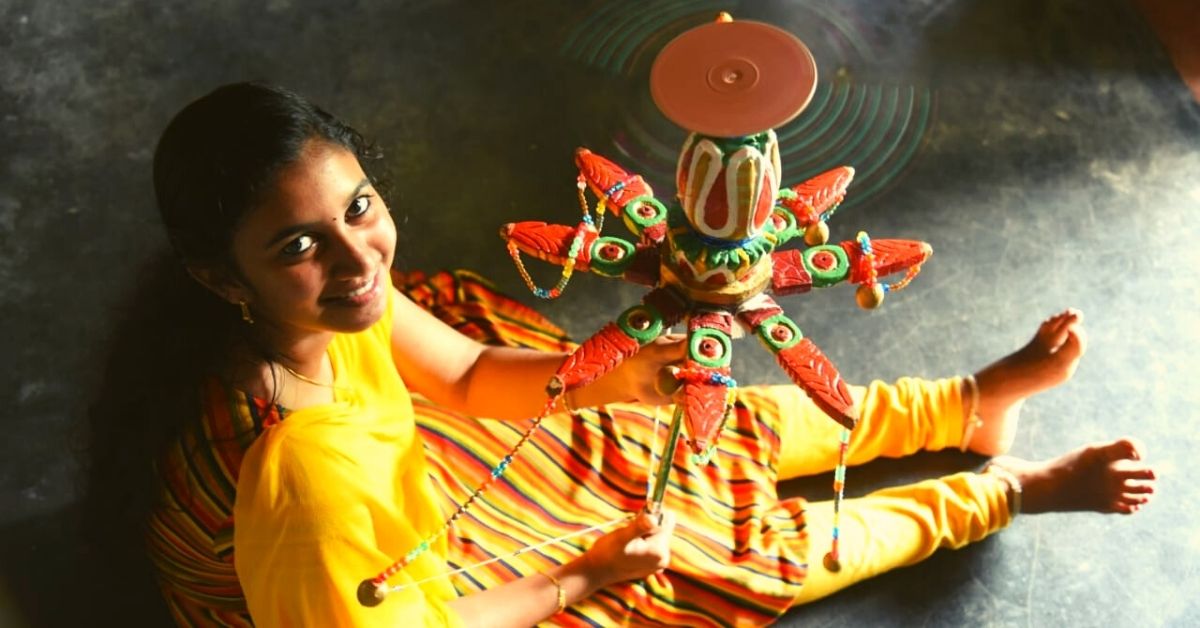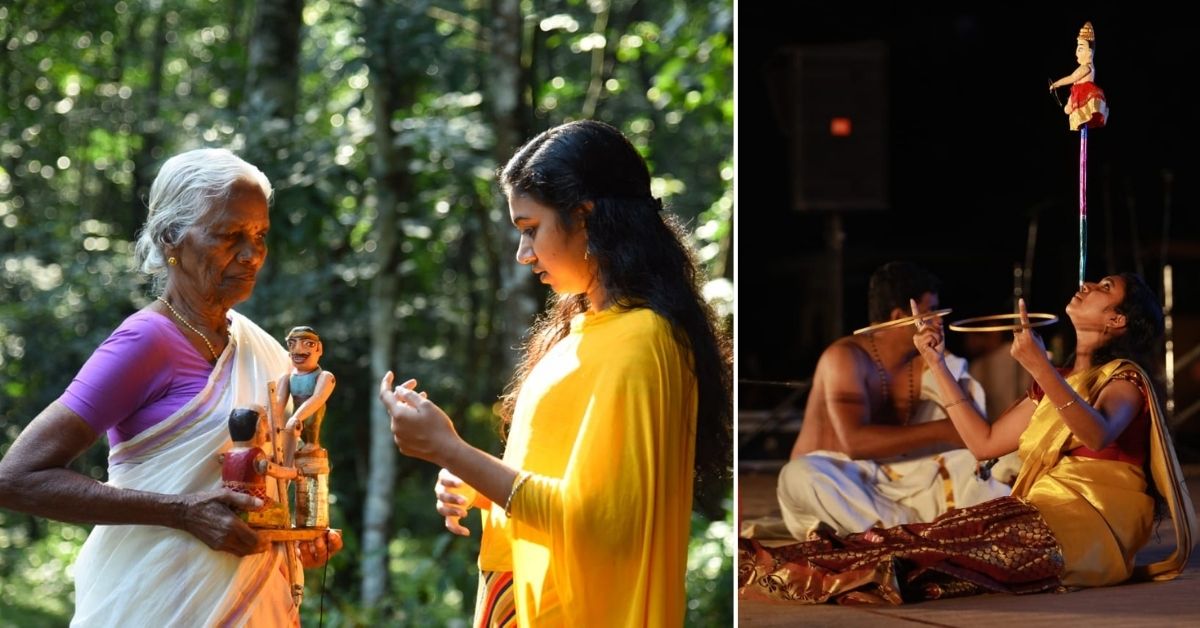The Fate of a Rare Dying Art Rests on The Lips of This 20-YO Kerala Girl
After her grandmother Padma Shri Moozhikkal Pankajakshi lost her vision, Renjini KS from Kerala took over the mantle of being the sole guardian of the dying art of Nokkuvidya Pavakkali.

I n 2008, after performing a rare art form of puppetry called ‘Nokkuvidya Pavakkali’ in Paris, artist and Padma Shri awardee Moozhikkal Pankajakshi found herself at a crossroads. She was the last surviving artist of the dying art form and was aware of the burden she had carried for decades. But, her body had begun to give up under the pressure.
A centuries-old form of puppetry that originated in Kerala, Nokkuvidya Pavakkali is extremely strenuous as it involves balancing wooden puppets positioned on a tall pole in between the puppeteer’s upper lip and nose. The puppeteer, in this case, Pankanjakshi, had to hold balance while manipulating the puppets through a string held inside her mouth — a job that required absolute concentration and unimaginable balance. However, Pankajakshi who was 72 during the last performance began to feel the ache in her body and the blur in her eyes.
Her journey back home was clouded with uncertainty about the fate of this art form. However, a year later she soon discovered a silver lining in her granddaughter, Renjini KS.
Speaking to The Better India, 20-year-old Renjini says, “I was around 8 years old when I saw my mother very upset because she thought that our family legacy of Nokkuvidya Pavakkali would eventually die with my grandmother. That is when I along with three cousins decided to step up and learn the art form. But it proved to be extremely difficult and they all gave up. As I was staying with my grandmother, she continued to help me through my training and with time I improved.”

As the years progressed, Pankajakshi began to see herself in her granddaughter who would skillfully tackle the ancient demi-gods and goddesses at the tip of her lip with admirable grace. Today, this 20-year-old living in a remote corner of Kerala, a village called Monipally, is striving to keep ancient folklore and legends alive through this rare art form.
Becoming of A Puppeteer

Pankajakshi was 12 years old when she began to perform along with her parents. Being the eldest in the family it was on her to continue the legacy even after she got married at the age of 20.
“After marriage, I continued to perform along with my in-laws. My husband would make the toys while my mother-in-law would perform with me. This art form, from the music to the making of the dolls and the performance by the puppeteer, is done by the same family. And slowly, ours was the only family that continued it. Eventually, it was up to me to continue it,” says Pankajakshi, who couldn’t pass on the legacy to her daughter.
The indigenous theatre art form involves narrating stories from epics like Mahabharata and Ramayana through music and subtle movements of the puppets. Noku means vision and Vidya means knowledge, suggesting the importance of balance and vision of the puppeteer during the performance. During a performance, the tall tales of mythical characters and gods precariously rest on the face of the puppeteer. Even the slightest movement can become a mishap and derail the entire performance, explains Renjini.
“Eyes are very important when it comes to holding the balance and concentration. It takes more than a year just to get the balance right and then slowly you graduate into making the movements,” adds the young artist. She further adds that through the years her training has been extremely painful with her suffering several injuries but to preserve a valuable legacy all of it has been worth it.

Stressing on the importance of patience and perseverance, she adds that usually, only women are able to become puppeteers in this art form.
“Years ago my grandmother had told me that only women tend to become the centrepiece of the performance as the puppeteers as this art requires an unimaginable level of concentration and patience. Men in the family are usually involved in the musical narration through songs, playing instruments and creating the puppets. For instance, my grandfather used to be a very skilled craftsman responsible for making all the puppets we use today. After his passing, we have been struggling to replicate it and make new puppets,” says Renjini, who is also a Third Year B.Com student, aspiring to pursue a career in business management.
Like the star puppeteer she is, who deftly balances formidable epic characters on her philtrum, Renjini hopes to continue to hold the balance of her destiny as the sole guardian of the ancient art form.
Edited by Yoshita Rao

Similar Story

Kyani to Nirula’s: Artist Takes India Down Memory Lane with Sketches of Iconic Eateries
Aditya Raj from Jaipur visited an exhibition during his law school days and decided he would be an artist. Here’s his visual representation of a nostalgia trip with pictures of the most iconic eateries in India.
Read more >
If you found our stories insightful, informative, or even just enjoyable, we invite you to consider making a voluntary payment to support the work we do at The Better India. Your contribution helps us continue producing quality content that educates, inspires, and drives positive change.
Choose one of the payment options below for your contribution-
By paying for the stories you value, you directly contribute to sustaining our efforts focused on making a difference in the world. Together, let's ensure that impactful stories continue to be told and shared, enriching lives and communities alike.
Thank you for your support. Here are some frequently asked questions you might find helpful to know why you are contributing?


This story made me
-
97
-
121
-
89
-
167












